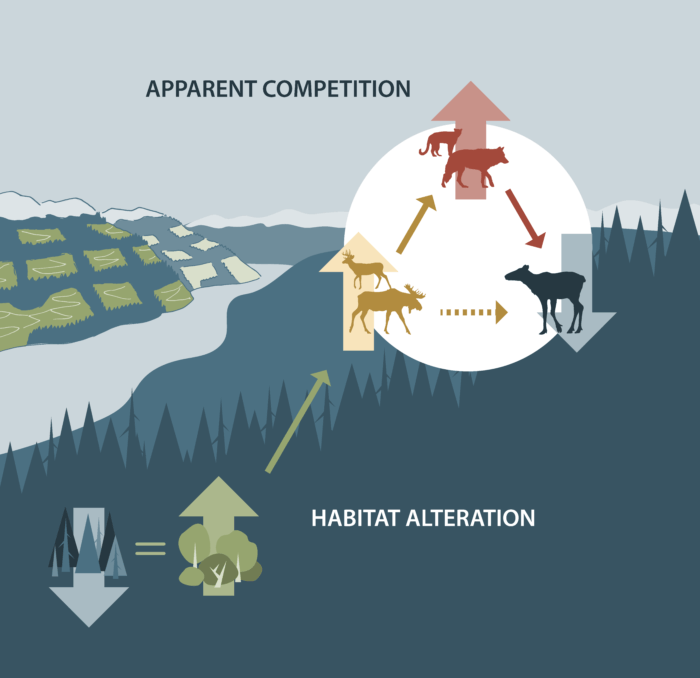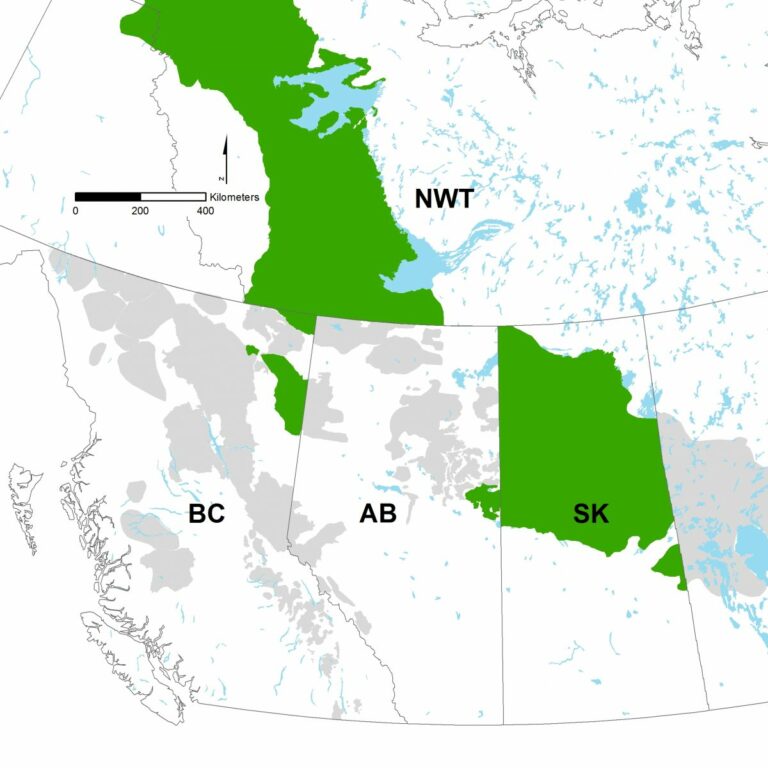Broad-scale landscape change is the primary threat to woodland caribou populations.
Habitat loss is a leading cause of species declines and inhibits the recovery of many endangered species, including woodland caribou. Broad-scale landscape change is the primary threat to woodland caribou populations by removing habitat and disrupting predator-prey systems. Landscape alterations shift caribou habitats toward early seral forests that favour other ungulate species, leading to increased predation on caribou via apparent competition. Thus, the focus of federal and provincial plans and policies targeting caribou recovery is habitat conservation and restoration. Measuring the direction, extent, and rate of habitat change within caribou ranges is essential to assess the effectiveness of such plans and policies at conserving habitat.

Research found that caribou populations lost twice as much habitat as they gained during a 12-year period (2000–2012). Forest cutting was a major cause of habitat loss for Southern Mountain Caribou, whereas wildfire was the greatest source of habitat loss for other ecotypes (Boreal and Northern Caribou). In addition, the creation of linear features that fragment habitat, such as roads and seismic lines, outpaced the regrowth and recovery of these lines.
These patterns have continued to occur while various provincial and federal plans and policies are seeking to conserve and recover woodland caribou habitat, including the federal woodland caribou recovery strategies under the federal Species at Risk Act, the Mountain Caribou Recovery Implementation Plan in British Columbia, and Alberta’s Woodland Caribou Recovery Plan.
The publication is available here.
“Despite ongoing efforts to help caribou under provincial and federal recovery plans, caribou lost twice as much habitat as they gained.”
